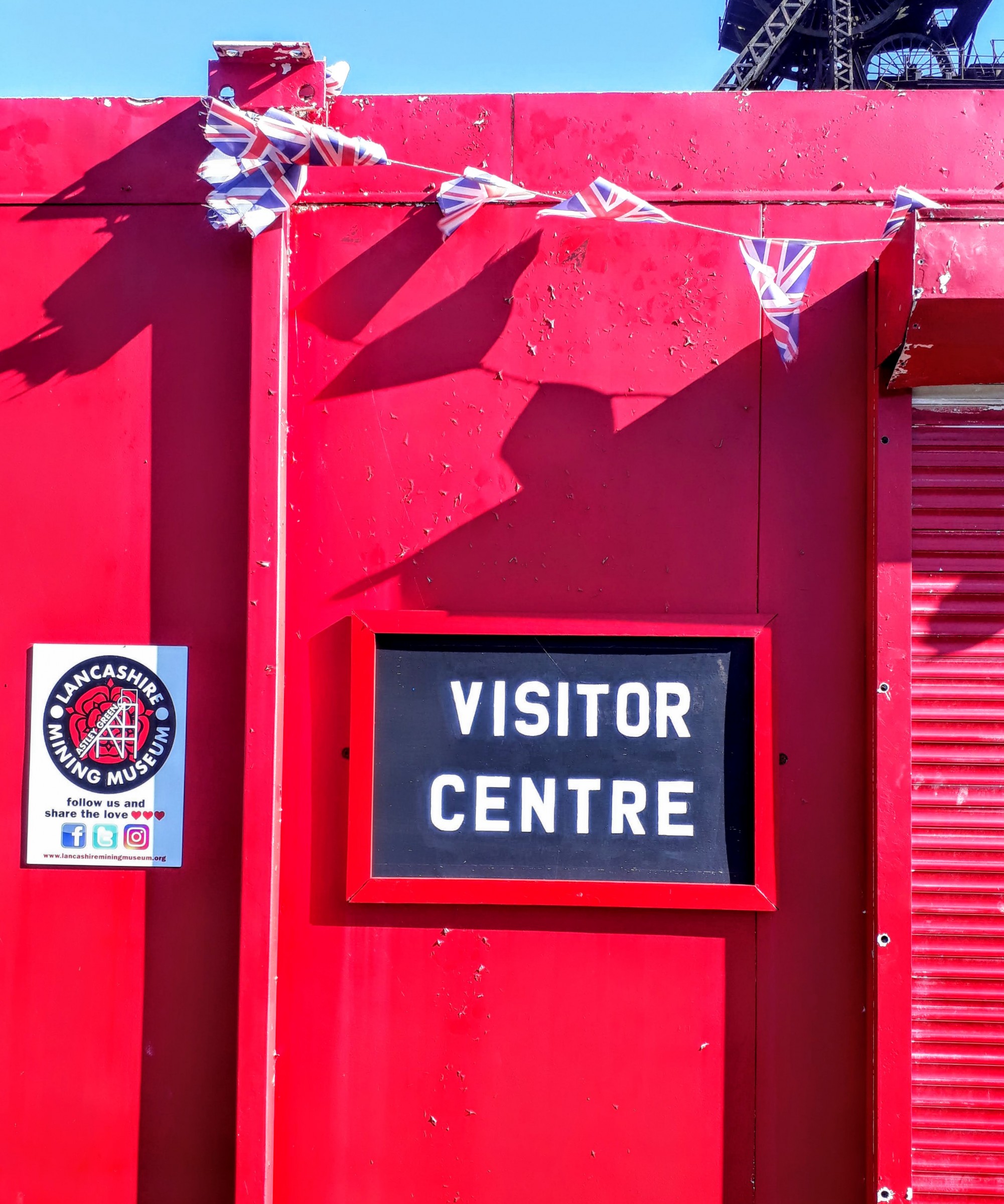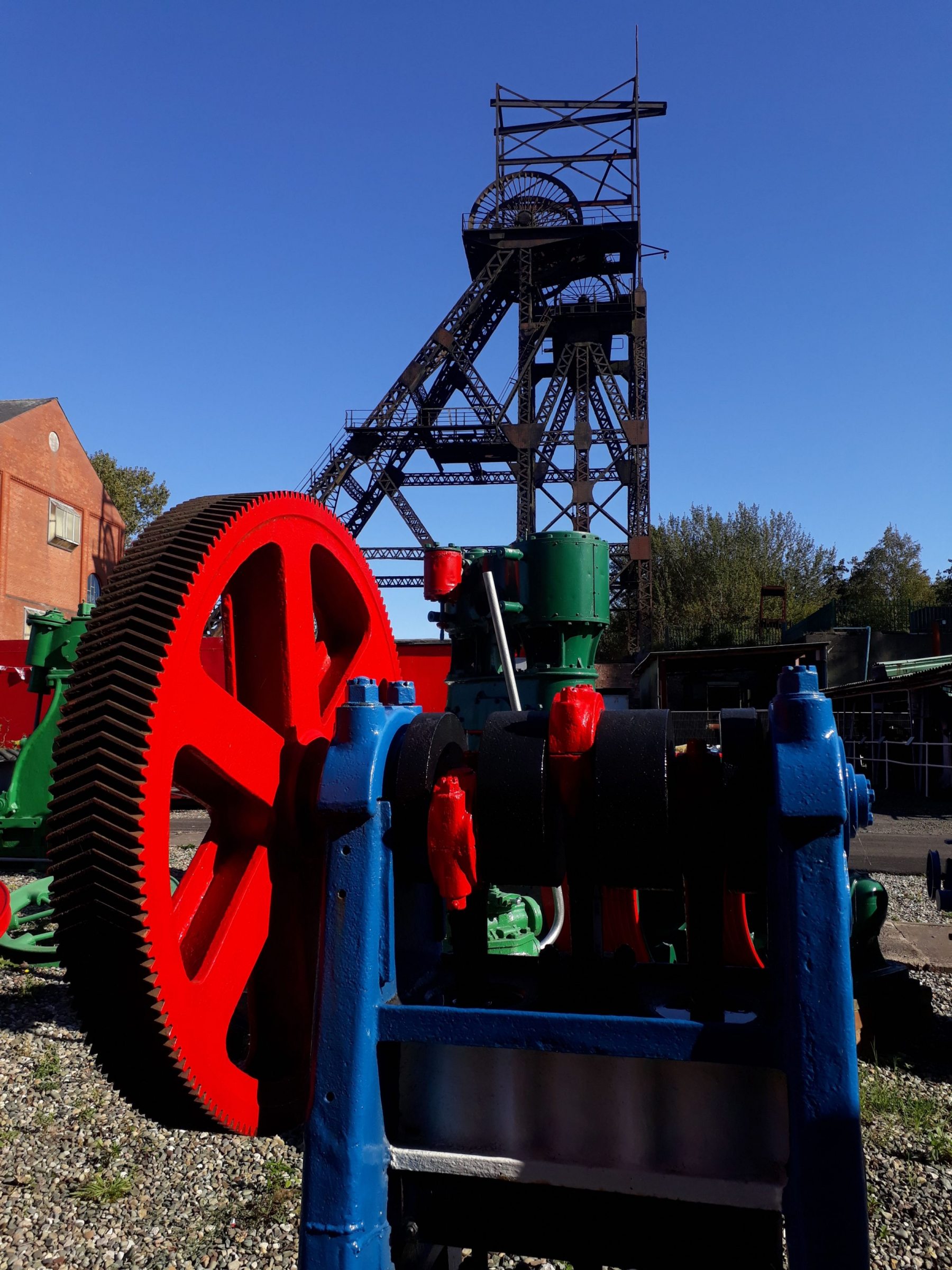As you approach the Lancashire Museum of Mining (formerly the Astley Green Colliery), you can’t miss the Grade II listed pit headgear which, like a huge Meccano construction, dominates the skyline. It is the last surviving example in the whole of the Lancashire coalfield. Next to it stands the winding engine, the largest steam engine still working in Europe.
When Lancashire was producing the bulk of the world’s cotton in the 19th century, it needed coal to power the mills and, as luck would have it, Lancashire had a particularly rich seam. The Astley Green Colliery was sparked into life in 1908 by the Pilkington Colliery Company and began operation in 1912. By 1927 there were 222 working collieries in Lancashire, and this was one of the largest. The coal was of excellent quality but deep, hence the enormous pit headgear and winding engine which was necessary to lift that weight of coal from a depth of around 3,000 feet.
Thanks to the efforts of the miners, the coal was brought up and put straight onto the railway or the canal to complete its journey to Liverpool, Manchester, Leeds and beyond. The last coal was brought to the surface in 1970.
On a crisp, sunny October morning, I was shown around by one of the volunteers, Steve Eckersley. He says: “After the colliery closed, the pit headgear and winding engine remained but nobody knew what to do with it all. So, for 15 years, it just remained idle. It got vandalised. All the windows were smashed. The weather got in. The pigeons got in.
 “In 1985, the Steam Society was invited on site and began to give it some much needed love. For that reason, the charity that runs the museum is still the Red Rose Steam Society. A group of skilled volunteers came on site and restored the engine. After nearly 30 years, they finally got it running in 2012.”
“In 1985, the Steam Society was invited on site and began to give it some much needed love. For that reason, the charity that runs the museum is still the Red Rose Steam Society. A group of skilled volunteers came on site and restored the engine. After nearly 30 years, they finally got it running in 2012.”
He continues: “The society started with loads of enthusiasm, but people had got older. People had retired. Or died. And, being engineers, they mainly wanted to simply come along and tinker. They didn’t really encourage visitors, especially not family groups. It got to the stage where it resembled an old man’s shed.”
Eckersley is a retired businessman from Leigh with an interest in local history. With the winding engine renovated, it was clear that the headgear needed restoration and would require significant capital. However, it was also obvious that nobody was going to give money to fund ‘an old man’s shed’.
 So, a couple of years ago, it was decided to rebrand the site as the Lancashire Mining Museum and engage with the local community to create a community asset. A diverse range of volunteers were recruited with a whole new set of skills.
So, a couple of years ago, it was decided to rebrand the site as the Lancashire Mining Museum and engage with the local community to create a community asset. A diverse range of volunteers were recruited with a whole new set of skills.
It is a work in progress and still entirely run by volunteers but their ambitions are big. So far, these people have raised around £5,500 per year which has just about covered running costs. But, last year, the turnover was more than £70,000. They have hosted steam fairs, bonfire parties and hired it out as a film location. You might recognise the silhouette of the headgear from series four of Peaky Blinders. As well as making money, these ventures bring in new audiences.
The 15-acre site bordered by the Bridgewater Canal and Astley Moss is a treat to explore. Future plans already beginning to take shape include a working narrow-gauge railway line (the museum’s collection of colliery locomotives is the largest in the UK) and development of the woodland as a local nature reserve. Get involved, you won’t regret it.
The museum and tearoom are open Tuesday, Thursday, Saturday and Sunday 1-5pm (1-4pm November – March).
Check out the Museum’s events page for latest events and engine running days.

























